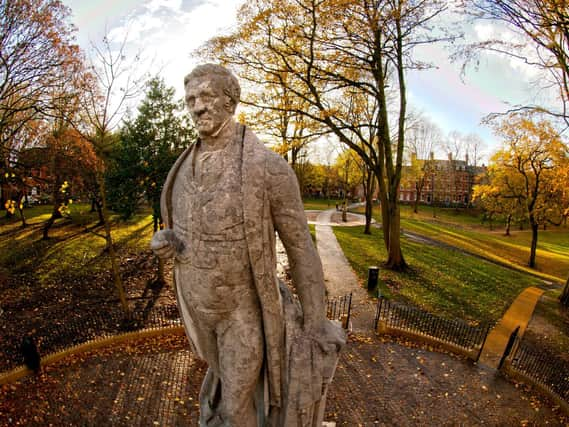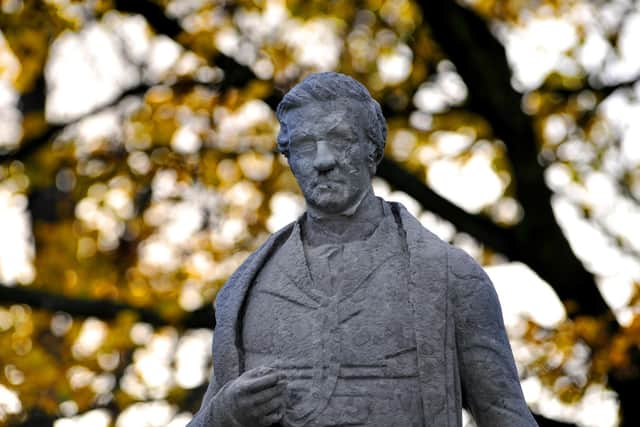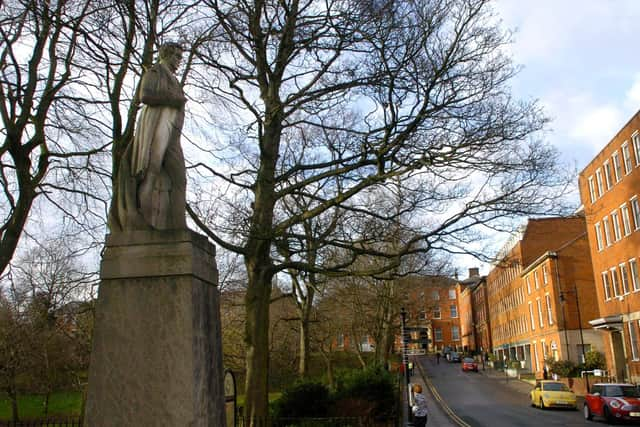Who was Sir Robert Peel and why does he have a statue in Preston?


Sir Robert was born in Bury, now Greater Manchester, at Chamber Hall, and educated at Bury Grammar School, prior to furthering his education at Harrow and Oxford University, writes Andrew Atkinson.
Sir Robert entered Parliament as an MP in 1809, at the age of 21, and became Home Secretary in 1822. He represented a number of constituencies and although none were in the north west he was in residence at the former Penwortham Priory in 1832.
Advertisement
Hide AdAdvertisement
Hide AdSir Robert offered a loan of £40,000 to Lawrence Rawstorne who purchased the Penwortham Estates in 1810 for £92,000, which included the remains of St Mary’s Priory which had been founded by the Monks of Evesham Abbey in 1087.


Lawrence Rawstorne accepted Sir Robert’s loan, and he lived at Penwortham Priory, taking up residence after restoration work. The Priory was demolished in the 1960s.
Sir Robert was among the noblemen and gentlemen who accepted the office of stewards for the music festival of the Preston Guild Mercant in 1822.
The Procession of Trades at Preston Guild 1822 included representatives of trades, including tanners, smiths, plasterers, gardeners, tailors, printers and butchers. The tradespeople waved banners and pulled floats, with some on horseback.
Advertisement
Hide AdAdvertisement
Hide AdAlong with Sir Robert other noblemen and gentlemen who accepted the office of stewards were The Hon Mr Justice Park; The Rev The Vicar of Preston, and Lawrence Rawstorne.


In 1834 Sir Robert became Prime Minister for the first time. He also served as Prime Minister in 1839.
During his time as Prime Minister he introduced reforms to the financial and manufacturing industries, which included limiting the number of hours women and children could work, along with raising safety standard in factories - including many in Lancashire.
On this front Sir Robert repealed the Corn Laws, restricting grain imports from abroad, thus supporting British farming in the wake of the Irish famine which had lead to thousands of people in the country starving to death.
Advertisement
Hide AdAdvertisement
Hide AdThe Preston Strike in 1842 saw thousands cotton workers meet at Preston’s covered market. Preston’s Mayor Samuel Horrocks, officials, police, and the enlistment of soldiers from the 72nd Highlanders, were called upon following riots.
The Mayor read the Riot Act, and after violence escalated, the workers where fired upon in Lune Street, outside Preston Corn Exchange - shooting at least eight men - of which four were fatally shot, including John Mercer, aged 27, a handloom weaver, of Ribbleton Lane, Preston.
An assassination attempt was made on Sir Robert in 1843 by Scottish woodsman Daniel M’Naghten - who erroneously killed his personal secretary Edward Drummond.
Sir Robert resigned as Prime Minister in 1846, in the wake of his attempts to repeal the Corn Laws.
Advertisement
Hide AdAdvertisement
Hide AdBorn on February 5, 1788, Sir Robert died, aged 62, following a horse riding accident. He was thrown from his horse while riding on Constitution Hill, London, on June 29, 1850.
Sir Robert’s horse stumbled on top of him and, after being hospitalised with a clavicular fracture, rupturing his subclavian vessels, he died on July 2, 1850.
Following his passing Queen Victoria said he was, "A kind and true friend, a man of unbounded loyalty, courage, patriotism and high-mindedness."
Descendants of Sir Robert reside in South Africa, the Australian states of New South Wales, Queensland, Victoria and Tasmania, along with parts of America and Canada.
Advertisement
Hide AdAdvertisement
Hide AdSusan White, from Omaha, in the state of Nebraska, on the Iowa border, USA, said: “Sir Robert Peel is my great, great, great grandfather.
“My dad and his two brothers were named after him, by his great-granddaughter Alice, my great-grandmother, who I knew well. She lived to be 96 years old and told me many stories about my famous family member.”
Susan added: “In 1829 he believed the police are only as effective - as they have community trust and support. I am very proud of my family.”
Many public houses in Britain have been named Sir Robert Peel, including one in Victoria Road, Walton-le-Dale, Preston, and formerly at Newton Street, Deepdale, Preston (1871-1901).